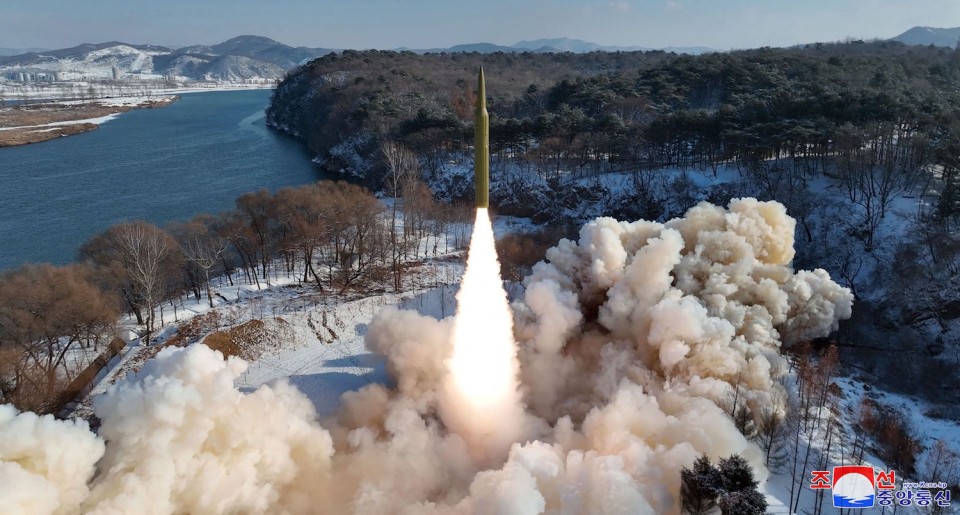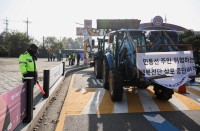
SEOUL, Jan 15, 2024 (AFP) – North Korea said Monday it had successfully test-fired a new ballistic missile tipped with a hypersonic manoeuvrable warhead, the latest breakthrough in its pursuit of advanced weaponry to threaten South Korean and US targets.
The launch, Pyongyang’s first known weapons test this year and its first ever test of a solid-fuel hypersonic intermediate-range ballistic missile (IRBM), was detected by Seoul’s military Sunday afternoon.
A short report in the official Korean Central News Agency said that the solid-fuel IRMB was “loaded with a hypersonic manoeuvrable controlled warhead”.
The test was meant to verify “the gliding and manoeuvring characteristics” of the warhead and the “reliability of newly developed multi-stage high-thrust solid-fuel engines”, KCNA said.
KCNA said that Sunday’s launch “never affected the security of any neighbouring country and had nothing to do with the regional situation”.
But it came just days after Pyongyang staged live-fire exercises near the country’s tense maritime border with South Korea, which prompted counter-exercises and evacuation orders for some South Korean border islands.
It also comes after Kim last week branded Seoul his “principal enemy” and warned he would not hesitate to annihilate South Korea, as he toured major weapons factories.
Seoul’s defence ministry condemned the launch, saying it would carry out an “overwhelming response” if North Korea conducted “a direct provocation” against the South.
“This behaviour by North Korea is a clear provocation that violates UN Security Council resolutions banning the use of ballistic missile technology, and we issue a stern warning and strongly urge it to stop immediately,” it added in a statement.
Solid-fuel missiles are easier to hide and quicker to fire, and hypersonic missiles typically allow the user to manoeuvre them in flight to better hit targets. Both technologies have long been on Kim’s list of objectives.
“North Korea appears to be pursuing the development of hypersonic missiles and IRBMs using solid-fuel rocket boosters at the same time,” said Chang Young-keun, a missile expert at the Korea Research Institute for National Strategy.
“Mid- to long-range hypersonic missiles will be particularly useful in striking Guam while evading the US missile defence system,” he added.
North Korea’s last missile test was of a Hwasong-18 solid-fuel intercontinental ballistic missile (ICBM) on December 18.
– A shift –
KCNA released a single photograph of the missile launch with its Monday report, which did not mention Kim being present to oversee the test.
US-based analyst Ankit Panda told specialist site NK News that the image suggested the missile featured a so-called manoeuvrable re-entry vehicle (MaRV).
Pyongyang is trying to develop weapons with enhanced precision and the ability to “better penetrate” missile defences, he said.
Relations between the two Koreas are at one of their lowest points in decades, after Kim enshrined last year the country’s permanent status as a nuclear power into the constitution and test-fired several advanced ICBMs.
Traditional allies Russia and North Korea have meanwhile boosted ties recently, with Kim making a rare overseas trip to see President Vladimir Putin in Russia’s far east in September.
Top Russian officials, including Moscow’s defence and foreign ministers, also visited North Korea last year, with the flurry of trips both ways fanning concern among Kyiv’s allies over the possibility of a potential arms deal.
On Monday, a North Korean government delegation headed by Foreign Minister Choe Son Hui arrived in Moscow for an official visit, KCNA reported.
Last year, Pyongyang successfully put a reconnaissance satellite into orbit, after receiving what South Korea claimed was Russian assistance in exchange for arms shipments for Moscow’s war in Ukraine.
Despite its difficult economic situation, Pyongyang conducted a record-breaking series of weapons tests in 2023, including its first solid-fuel ICBM — which experts called a major technological breakthrough.







